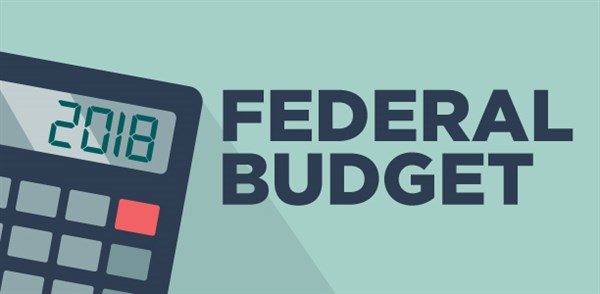The Liberals unveiled their 2018 federal budget earlier today, which slates half a billion dollars towards addressing Phoenix pay problems. The budget also proposes a number of policy proposals aimed at achieving greater gender equality.
Unlike last year’s budget, which stayed mum on the Phoenix pay issue, this year’s budget aims not only to stabilize the problem, but opens the door to ditching Phoenix altogether. The government has proposed $431.4 million over six years ($389 million of which would be spend during fiscal years 2017-2018 and 2018-2019) to “continue making progress on Phoenix issues”. This is in addition to the $460 million the government has spent, to date, implementing Phoenix and dealing with its fallout.
These funds will be put towards hiring more staff to support the pay system. The government has also proposed hiring more staff to work within departments to help employees with their pay problems – something public service unions have been demanding for some time.
It seems the government has also heard the unions’ message that the Phoenix pay system is irreparable. The budget proposes $16 million over two years, beginning in 2018-2019, “to work with experts, federal public sector unions and technology providers on a way forward for a new pay system.”
The budget also recognizes that Phoenix poses unique challenges when it comes to filing income tax. To this end, the government is allocating $5.5 million over two years to the Canada Revenue Agency to process “individual income tax reassessments that are required due to Phoenix pay issues and handle telephone inquiries.” As for members dealing with the repercussions of being overpaid by Phoenix, the government says is it looking into the feasibility of legislative changes that would allow for repaying net amounts of withholdings, starting in the 2018 taxation year.
The 2018 federal budget puts forward a number of policy proposals aimed at achieving greater gender equality. Ahead of the budget’s release, the government was already touting its proposal for an additional five weeks of EI parental benefits – aimed primarily at fathers – for parents who agree to share parental leave. It’s been referred to as a “use-it-or-lose-it” benefit.
Indeed, the budget proposes additional paid leave for two-parent families who choose to share parental leave: five additional weeks of parental leave under the standard parental benefits option (35 weeks, at 55% of average weekly earnings), or 8 additional weeks under the extended benefits option (61 weeks, at 33% of average weekly earnings). Under the standard plan, parents could share their combined 40 weeks in various combinations (e.g.: 20/20, 15/25) with a minimum of five weeks available for each parent. These benefits will be available to eligible two-parent families, including adoptive and same-sex couples.
“Statistics Canada reported in 2016 that 80 per cent of new fathers in Quebec claimed or intended to claim parental benefits, in part because of leave that was specifically reserved for them. In the rest of Canada, which does not provide second parent leave, this same figure was only 12 per cent.”
The government is hoping that more equitable parental leave will lead to more equitable hiring practices and reduce discrimination by employers.
Like the previous changes to parental leave, this proposal won’t take effect immediately. CAPE will keep an eye on this file and update members as developments arise.
The government is also taking aim at the gender pay gap by focusing on the federally regulated sector – specifically by supporting equal pay for equal work and implementing pay transparency. The Liberals plan to table a pay equity regime, later this fall, which will “include strong oversight and enforcement, require regular maintenance and take an innovative approach to ensure that on average, women and men receive the same pay for work of equal value.” Approximately 1.2 million Canadians work in the federally regulated sector.
Gender considerations also played a part in crafting the 2018 budget. According to the government, “no budget decision was made without being informed by Gender-Based Analysis Plus”. The GBA+ tool is used to assess the impact of policies and programs on women, men and gender-diverse people. The government plans to table GBA+ legislation to “make gender budgeting a permanent part of the federal budget-making process.”
Status of Women Canada is slated to get a bump in stature: the government plans to make it an official department of the Government of Canada. The budget also tasks Status of Women Canada with holding a national roundtable on GBA+. The department will also receive funding up to $7.2 million over five years to “lead a national conversation on gender equality with young Canadians and $1.8 million over two years to develop engagement strategies to promote gender equality to men and boys. There is also $100 million over five years to support projects that advance gender equality.
“Few governments have a strategy focused on men and boys as part of their work to create a more egalitarian society; investing in this effort would make Canada a world leader in this area.”
This government has often marketed itself as one that embraces science and evidence-based decision-making. To this end, the government is proposing “renewing and modernizing Statistics Canada”. The budget proposes “a whole-government approach to data” and aims to improve how the government collects and shares data. A modernized Statistics Canada would support this initiative. The government is proposing $41 million over five years towards this vision, with $4.4 million ongoing. The budget also proposes investments to address data gaps in international trade in services. Finally, on the heels of an incredibly successful 2016 census, the government wants to provide $767 million over ten years to Statistics Canada to conduct the 2021 census of population.
The Department of Finance has also been tasked to work with Statistics Canada and Status of Women Canada to “develop a broader set of indicators and statistics to measure and track Canada’s progress on achieving shared growth and gender equality objectives.”
Finally, there are a number of changes aimed at tackling harassment in the workplace. The government has proposed creating a Centre of Diversity, Inclusion and Wellness within the public service. As part of its mandate, the centre would help public servants dealing with sexual harassment in the workplace. The government also proposes amending the Canada Labour Code “to provide five days of paid leave to workers in federally regulated jurisdictions who are victims of family violence.”
For more information on the 2018 budget, please visit the Finance Canada website.



